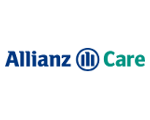Healthcare: The Medical System
Since the 1940s, two public entities manage the public health system in Panama. The Ministry of Health (Ministerio de Salud) develops free health examination programs and medical attention for the poorest people. It is also in charge of hygiene inspection, health training and the construction of hospitals and clinics.
The Social Security System (Caja de Seguros Social) runs the country's clinics and hospitals, and allows workers, regardless of their incomes, to have access to health care, emergency medical help, maternity care and a retirement pension.
The public health system is criticized mainly with regards to the issue of accessibility with a significant gap between urban and rural areas. For example, most private hospitals are located in Panama City. The only other city that has medical centers with modern equipment is in the Chiriquí Province in the western region of Panama. Elsewhere, good medical care is very limited and only first aid is available.
Most Panamanian doctors are trained abroad (e.g. United States or Cuba), which means that the standards of care are very similar to U.S. or Europe.
The main differences between the public and the private system are the facilities, accommodation and overall level of attention received by patients. Private hospitals are very modern and well equipped. For instance, the Johns Hopkins affiliated Punta Pacifica Hospital is considered to be the most technologically advanced medical center in Latin America.
The other big difference is in the price. The private system is quite expensive when compared to Europe, although it is a bit cheaper than in the United States. Medical insurance in Panama is essential if you want a reliable and fast service.
Doctors expect immediate payment, even for emergencies - credit cards are normally accepted for hospital charges, but not for doctor’s fees. We also recommend you to take cover with medical evacuation/repatriation, since it could cost tens of thousands of dollars.
For more information, you may access the following websites:
- Ministry of Health - www.minsa.gob.pa
- Caja de Seguro Social - www.css.org.pa
Hospitals and clinics
Panama city:
- Hospital Nacional: State-of-the-art private hospital.
Ave. Cuba - Calle 38 and Calle 39, tel. 507-207-8100, 24-hour emergency room tel. +507 207-8110; www.hospitalnacional.com
- Hospital Punta Pacifica: Modern private hospital, affiliated with John Hopkins. Many doctors are trained in the United States and most speak English.
Blvd Pacífica-Vía Punta Darién, tel. 507-204-8000; www.hospitalpuntapacifica.com
- Clinica Hospital San Fernando: Major private hospital with modern facilities and a developed Pediatric Department
Via Espana, Las Sabanas, tel. 507-229-3800, 229-0300, 24-hour emergency room tel. 229-2004; www.hospitalsanfernando.com
- Hospital Santo Tomas: Biggest public teaching hospital in Panama
34 Este y Ave. Balboa; tel. 507-227-4122, 507-225-1738, www.hst.gob.pa/
David:
- Hospital Centro Médico Mae Lewis: Tel. 507-775-461
Emergencies
For an emergency in Panama, call one of the following:
- Fire Department: 103
- Red Cross: +507-228-2187
- Ambulance: +507-264-4122
- Ambulance SEMM: +507-366-0122
- Ambulance EMI: +507-236-6060
Pharmacies
You can find many pharmacies in Panama: inside supermarkets, in hospitals and clinics and on the street. Popular pharmacy chains include Farmacia Arrocha and Metro Farmacia (where you can also find food, beauty products and furniture).
The price of medicines can be low or expensive depending on where it's been imported from. Generally speaking most medicines are locally available, especially in the big cities. When you fill a prescription, you will receive the exact number of pills prescribed with the instructions on top of the bag.



